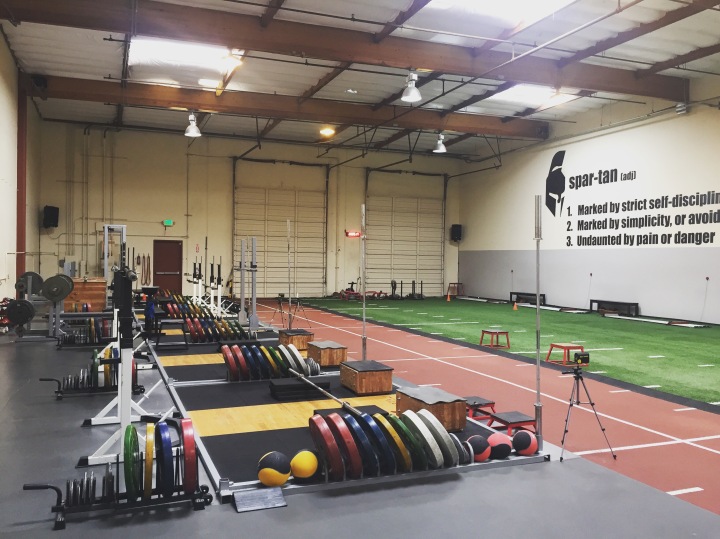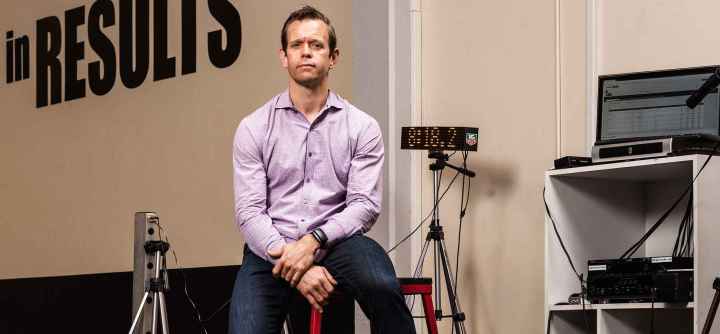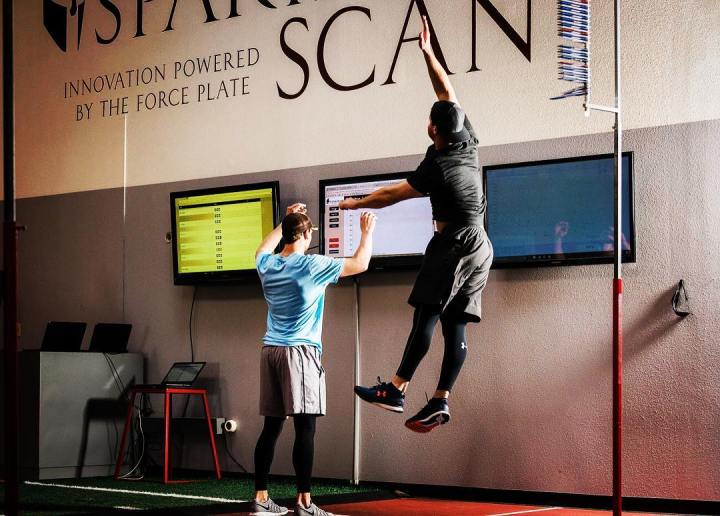
Follow @ SpartaScience Follow @ TrainWithSparta ![]()
The world of High Performance sport is highly competitive where success is more often than not dictated by wins and losses. As a result, coaches look to the latest and greatest innovations in order to gain a winning edge over their competitors. Sports Science and athlete monitoring has increased in popularity within the United States over the last 5 years and a company by the name of Sparta Science are among those that are leading the way in bringing Sports Science to the forefront of American sport. Founded by Dr. Phil Wagner and based out of Menlo Park, California, Sparta’s unique mix of technology and practical application towards athletic performance are making coaches all around the world sit up and take notice. In this exclusive interview for The Oval Office, Mike Hoffmann the Director of Sports at Sparta Science, gives us an insight into Sparta’s training philosophy and how the use of technology and evidence-based practice can provide a greater service to our athletes.

- What is the Sparta Science philosophy on high performance training?
Sparta’s philosophy is simple: to provide evidence-based training specific to each individual’s needs. Utilizing a few assessments we spent years developing, perfecting, and building an aggregate database, we are able to identify where each athlete is at objectively. Based on these insights of understanding an athlete’s unique movement signature, along with their training and injury history, sport, position, and age, we can design individual specific training based on the latest scientific evidence. At our training grounds, every movement that is executed during each athlete’s workout is tracked within the software. The data from sprints, lifts, plyometrics, slideboard, etc. is used to validate and adjust training, as well as drive discussion between our coaches and athletes. We believe it is crucial for each individual athlete to not simply be a bystander, but to take ownership of their own athletic destiny. By utilizing a system to simplify and interpret scientific results athletes’ and coaches’ goals are able to truly align.
- What type of athletes does Sparta Science work with?
Sparta works with athletes that are committed to the process of maximizing their potential. This sounds cliché but is very important to the Sparta ethos. As part of the initial training session, each athlete goes through a mentally and physically challenging qualification so both the athletes themselves, as well as the coaches here at Sparta can be sure the relationship will be a good fit.

Article from ‘Inc.com’ on the role Sparta Science is playing in minimizing athletic injuries while maximizing performance.
https://www.inc.com/magazine/201704/jeff-bercovici/spartan-injuries-data.html
- How does Sparta Science incorporate the use of force plate technology into a training program?
We believe testing is training. As a result, we make the assessments part of each athlete’s workout. When an athlete first walks in the door, they go through the Sparta scan, balance, and landing to not only see where they are neuromuscularly but also to see any asymmetries both from the upper and lower body. Immediately, the software will identify a workout that can be sent out to the athlete’s phone based on a decision tree created from the results on the force plate, tied in with previous injury history, sport/position, and the number of available training days. For a healthy athlete, we reassess every microcycle (3 weeks) to see if each athlete has adapted to the program we prescribed. For an injured athlete, we will re-assess the athlete on the Left/Right protocols each week as part of the return to play process.
- With the rise of sport science/applied performance in the United States, what challenges do you face in getting athletes and coaches to buy into the use of the technology and the Sparta Science training philosophy?
Fantastic question.
One of the biggest challenges (and benefits) is handling the transparency that the data creates. For athletes and coaches, it can be tough to use data to drive decision making because we are human and not everyone adapts to the stimuli the same. As a result, the data can drive some uncomfortable discussions between coach and athlete if the trend is negative. However, we believe that these uncomfortable conversations are a necessary step in progress to objectively evaluate our program and create trust between coach and athlete. As we know improvements are rarely linear. Was it the specific program we prescribed that was wrong? Was the athlete not taking care of themselves from a recovery standpoint?
Ultimately, the goal of the technology and applied performance is to help answer questions using objective results.

- What are the first considerations you have when taking on a new athlete?
Previous injury is first and foremost. Now that we work with teams in 4 continents we are able to run over 6,000 anonymized injures alongside the standardized force data and the number one predictor of injury is still previous history. There is a reason for that. Other factors include age, gender, sport/position, and ultimately what are the athletes’ goals? Everything needs to be aligned to be as efficient as possible in training for the desired outcome.
- What is Sparta Science doing to bridge the gap between strength and conditioning, sports science and sports medicine in the United States?
Another great question. Sparta’s goal is to validate diagnostic tools as well as training and rehabilitation philosophies through the use of objective results. This started from Phil’s passion while in medical school after beginning his career as a strength & conditioning coach. Really these three disciplines have way more in common than not. Data should create transparency and drive communication and collaboration between these departments. The organizations we see that have great success do just this. Common goals or KPIs, transparency, communication, and they can put egos aside to find the best solutions to each problem. Every one of our Sparta partners skins the cat a little bit differently which is what’s great because then we can see both organizationally and in the data what things are working that we never thought of, and understand there isn’t necessarily one right way.

Mike has been with Sparta Science for four years and is currently Director of Sports. Sparta’s mission is to reduce injuries and increase performance with validated assessments and evidence based prescriptions.
Follow @ MikeHoffmann_
![]()
